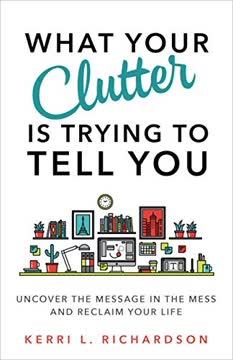Key Takeaways
1. Clutter is a Messenger, Not a Monster
Clutter is not out to sabotage you; it’s out to get your attention.
Reframing Clutter. Instead of viewing clutter as a personal failing or an insurmountable problem, recognize it as a signal. It's a message from your inner self, pointing to areas in your life that need attention, whether physical, emotional, or mental. This shift in perspective allows you to approach clutter with curiosity and compassion rather than judgment and dread.
Clutter as a Symptom. Clutter often reflects underlying issues, such as unresolved emotions, unmet needs, or unfulfilled dreams. For example, a pile of unread books might indicate a desire for self-improvement coupled with a fear of failure, while a cluttered closet could represent a reluctance to let go of the past. Recognizing these connections is the first step toward addressing the root causes of clutter.
Opening Channels. Clutter blocks the flow of abundance in all its forms. By clearing physical and emotional clutter, you create space for new opportunities, relationships, and experiences to enter your life. This process involves not only decluttering your physical environment but also addressing negative thought patterns, toxic relationships, and limiting beliefs.
2. Resistance Reveals Deeper Fears
Your inner critic is just a loving little liar.
Inner Critic's Role. Resistance to decluttering often stems from the inner critic, a part of your psyche that fears change and seeks to maintain the status quo. This inner voice can manifest as procrastination, self-doubt, or a barrage of excuses for why you can't let go of certain items. Recognizing the inner critic's tactics is crucial for overcoming resistance.
Identifying Fears. The specific excuses your inner critic uses often reveal your deepest fears and insecurities. For example, the fear of wasting money might lead you to hold onto items you no longer need or want, while the fear of forgetting the past could result in a reluctance to discard sentimental objects. Addressing these fears directly is essential for breaking free from the cycle of clutter.
Compassionate Approach. The most effective way to handle your inner critic is with love and compassion. Instead of fighting against it, acknowledge its concerns and reassure it that you can handle whatever challenges may arise. This approach involves taking small, manageable steps, celebrating your progress, and seeking support from others when needed.
3. Clutter Speaks Volumes
Clutter is a temper tantrum of the soul, and it’s time to listen closely to what it’s saying.
Outer World Reflects Inner World. The state of your physical environment often mirrors your inner state. A cluttered home can reflect a cluttered mind, while a disorganized office might indicate a lack of focus or direction in your career. Recognizing these connections can provide valuable insights into your emotional and mental well-being.
Common Clutter Hot Spots. Certain areas of your home are particularly prone to clutter, each holding its own unique message. For example:
- Closets: Hidden secrets, unfulfilled potential
- Counters/Tabletops: Overwhelm, lack of prioritization
- Desk/Office: Financial stress, career stagnation
- Car: Rushing, lack of downtime
- Garage: Deferred dreams, forgotten hobbies
- Attic: Ties to the past, resistance to moving forward
Specific Clutter Culprits. Individual items can also hold significant meaning. Books might represent a desire for knowledge or a fear of inadequacy, while clothes could reflect body image issues or a longing for a different identity. Family heirlooms can evoke feelings of obligation, guilt, or nostalgia.
4. Unrealistic Expectations Fuel Clutter
With all-or-nothing thinking, nothing always wins.
The Trap of Perfectionism. Unrealistic expectations are a major obstacle to decluttering. The belief that you must tackle an entire project at once can lead to overwhelm and procrastination. Breaking down large tasks into smaller, more manageable steps is essential for overcoming this hurdle.
The Pomodoro Technique. A time-management method that involves working in focused 25-minute intervals, separated by short breaks. This technique can help you stay on track and avoid burnout. It also helps quiet your inner critic because you’re baby-stepping along.
Success in Action. The key to overcoming unrealistic expectations is to focus on the process rather than the outcome. Celebrate small wins and acknowledge your progress along the way. Remember that success lies in taking action, not in achieving perfection.
5. Boundaries are Essential for a Clutter-Free Life
When you set boundaries, you teach people how to treat you.
Defining Boundaries. Boundaries are the limits you set in your relationships with others, defining what is acceptable and what is not. Setting healthy boundaries is essential for protecting your time, energy, and emotional well-being. Without boundaries, you may find yourself constantly giving to others at the expense of your own needs.
Identifying Boundary Violations. Pay attention to situations where you feel taken advantage of, resentful, or drained. These feelings are often indicators that your boundaries are being crossed. Common examples include:
- Saying yes when you want to say no
- Tolerating disrespectful behavior
- Allowing others to monopolize your time
Setting Boundaries Effectively. The key to setting boundaries is to be clear, concise, and assertive. Avoid over-explaining or apologizing for your needs. Remember that it's okay to say no, and that doing so is an act of self-care.
6. Old Beliefs Create Clutter
Beliefs act like filters in your brain, causing you to view the world in a specific way.
Beliefs as Filters. Beliefs are the rules we live by, often formed in childhood based on our experiences and observations. These beliefs act as filters, shaping how we perceive the world and influencing our behavior. Limiting beliefs can create emotional clutter, preventing us from pursuing our goals and living fulfilling lives.
Identifying Limiting Beliefs. Pay attention to negative self-talk, recurring patterns in your life, and areas where you consistently struggle. These can be clues to underlying limiting beliefs. Common examples include:
- "I'm not good enough."
- "I don't deserve success."
- "I'm not capable of change."
Reversing Limiting Beliefs. The process of reversing limiting beliefs involves:
- Identifying the belief
- Challenging its validity
- Replacing it with a more empowering belief
- Acting as if the new belief is true
7. Clutter as a Convenient Distraction
The pressure of the expectations is enough to keep the clutter on your desk, your dream partner at bay, and the pounds on your body.
Avoiding the Real Issues. Clutter can serve as a convenient distraction from facing deeper issues or pursuing challenging goals. By focusing on the mess around you, you can avoid confronting your fears, insecurities, or unmet needs. This can manifest in various ways, such as:
- Procrastinating on important tasks
- Avoiding difficult conversations
- Staying in unhealthy relationships
The Fear of Success. Sometimes, clutter can be a way of sabotaging your own success. The fear of what might happen if you achieve your goals can be overwhelming, leading you to create obstacles that prevent you from moving forward.
Breaking the Cycle. To break free from this cycle, it's essential to identify the underlying fears and insecurities that are driving your behavior. Acknowledge these feelings and challenge their validity. Remember that you are capable of handling whatever challenges may arise, and that the rewards of pursuing your dreams are worth the risk.
8. Practical Steps to Clear Clutter
If you don’t love it, need it, or use it, it’s clutter.
Decluttering Support. Enlist the help of a supportive friend or family member to make the process easier and more enjoyable.
Limiting Incoming Clutter. Be selective about what you bring into your life. Decline hand-me-downs, cut unwanted items off at the pass, and buy quality over quantity.
Sorting Mail. Sort your mail as soon as you get it, recycling junk mail immediately.
Clothes. Review your wardrobe at the end of each season, donating items you didn't wear.
Books. Do a quick, gut-reaction sort into piles of Keep, Donate, and Maybe books.
Sentimental Items. If you don't love these items enough to use them or display them, they're clutter.
9. Turn Clutter into Cash
Genes do not eliminate the need for hard work. They clarify it. They tell us what to work hard on.
Online Marketplaces. Craigslist, Facebook Marketplace, and Amazon Seller Central are great options for selling your unwanted items.
Consignment Shops. Consider consignment shops for clothes, furniture, and other items.
Decluttr.com. Use this site to sell CDs, DVDs, games, electronics, and books.
Yard Sales. Host a traditional yard sale to get rid of a large number of items quickly.
Last updated:
FAQ
1. What is "What Your Clutter Is Trying to Tell You" by Kerri L. Richardson about?
- Clutter as a Messenger: The book reframes clutter not as a simple mess, but as a messenger revealing deeper emotional, mental, and energetic blocks in your life.
- Holistic Approach: Richardson explores both physical and non-physical clutter, including emotional baggage, toxic relationships, and limiting beliefs.
- Personal Growth Tool: The book positions clutter-clearing as a catalyst for personal growth, self-understanding, and reclaiming your life’s energy and space.
- Practical and Reflective: It combines practical decluttering strategies with introspective exercises to help readers uncover the root causes behind their clutter.
2. Why should I read "What Your Clutter Is Trying to Tell You" by Kerri L. Richardson?
- Beyond Organizing: The book goes beyond typical decluttering advice by addressing the emotional and psychological reasons behind why clutter accumulates.
- Personal Transformation: Readers are guided to use clutter as a tool for self-discovery, healing, and creating a more fulfilling life.
- Actionable Steps: Richardson provides practical exercises, real-life examples, and step-by-step methods to help readers make lasting changes.
- Compassionate Tone: The author encourages self-compassion and curiosity, making the process less about shame and more about empowerment.
3. What are the key takeaways from "What Your Clutter Is Trying to Tell You"?
- Clutter Reflects Inner Blocks: Clutter is often a symptom of deeper issues such as fear, resistance, or outdated beliefs.
- Small Steps Matter: Success in decluttering comes from taking small, manageable actions rather than overwhelming yourself with big projects.
- Boundaries and Beliefs: Setting healthy boundaries and challenging old beliefs are essential for clearing both physical and emotional clutter.
- Clutter as Opportunity: By understanding the message in your mess, you can unlock abundance, clarity, and new opportunities in your life.
4. How does Kerri L. Richardson define "clutter" in her book?
- Anything Blocking Your Dreams: Clutter is defined as anything that gets in the way of living the life of your dreams, not just physical mess.
- Physical and Non-Physical: It includes physical items, but also emotional baggage, toxic relationships, negative self-talk, debt, and even excess weight.
- Energetic Roadblock: Clutter is seen as an energetic block that prevents abundance, joy, and fulfillment from entering your life.
- Messenger, Not Enemy: Richardson encourages readers to view clutter as a messenger pointing to areas needing attention, rather than as an enemy to be fought.
5. What are the main causes of clutter according to "What Your Clutter Is Trying to Tell You"?
- Unrealistic Expectations: Expecting yourself to tackle everything at once leads to overwhelm and inaction.
- Lack of Boundaries: Difficulty saying no or setting limits with others results in energetic and physical clutter.
- Old Beliefs: Deep-seated, often unconscious beliefs from childhood can drive clutter-creating behaviors and self-sabotage.
- Emotional Avoidance: Clutter can serve as a distraction or protection from facing uncomfortable emotions or fears.
6. What is the role of the "inner critic" in clutter, as described by Kerri L. Richardson?
- Source of Resistance: The inner critic is the voice that resists change and keeps you stuck in familiar patterns, often sabotaging decluttering efforts.
- Loving Liar: Richardson describes the inner critic as a "loving liar" who tries to protect you from perceived dangers of change, even if it means holding onto clutter.
- Needs Compassion: The book suggests partnering with your inner critic through compassion, structure, and small steps, rather than fighting against it.
- Indicator of Deeper Issues: Resistance from the inner critic often points to deeper fears or unaddressed needs that must be acknowledged for progress.
7. How does "What Your Clutter Is Trying to Tell You" address emotional and non-physical clutter?
- Broad Definition: Emotional clutter includes negative self-talk, toxic relationships, regrets, grudges, and outdated thoughts.
- Interconnectedness: The book explains how emotional clutter can lead to physical clutter and vice versa, creating a cycle of stagnation.
- Practical Tools: Richardson offers exercises for identifying, processing, and releasing emotional clutter, such as journaling, forgiveness, and boundary-setting.
- Focus on Self-Compassion: Readers are encouraged to approach emotional clutter with kindness and curiosity, not judgment.
8. What practical methods and tools does Kerri L. Richardson recommend for decluttering?
- Pomodoro Technique: Using timed, focused work sessions (e.g., 25 minutes) to break decluttering into manageable chunks.
- Sorting Systems: Quick, intuitive sorting into "Keep," "Donate," and "Maybe" piles to avoid overthinking.
- Journaling Exercises: Reflective writing to uncover the emotional roots of clutter and resistance.
- Boundary Practice: Specific scripts and challenges to help readers practice saying no and setting limits with others.
9. How does "What Your Clutter Is Trying to Tell You" help readers uncover the deeper messages behind their clutter?
- Guided Questions: The book provides targeted questions to help readers explore what their clutter represents and what needs it may be serving.
- Case Studies: Real-life client stories illustrate how clutter often masks deeper fears, unmet needs, or unresolved emotions.
- Self-Inquiry: Exercises prompt readers to ask what benefits they gain from keeping clutter and what they fear about letting it go.
- Reframing Clutter: By viewing clutter as a messenger, readers are encouraged to seek the lesson or message it holds, leading to personal growth.
10. What are some of the most common types and "hot spots" of clutter discussed in the book?
- Physical Hot Spots: Closets, countertops, desks, cars, garages, attics, and even the body (excess weight).
- Emotional Hot Spots: Draining relationships, negative self-talk, and a worrying mind.
- Specific Clutter Culprits: Books, clothes, magazines, family heirlooms, half-done projects, and sentimental items.
- Personalized Impact: Each hot spot is explored for its unique emotional or energetic message, helping readers identify their own patterns.
11. What are the best quotes from "What Your Clutter Is Trying to Tell You" and what do they mean?
- "Clutter is a temper tantrum of the soul, and it’s time to listen closely to what it’s saying." – Clutter is a signal from your deeper self that something needs attention or healing.
- "Success is in the action, not the outcome." – Taking small steps is more important than achieving perfection; progress comes from movement.
- "Your inner critic is a loving liar." – The resistance you feel is often a misguided attempt to protect you, not a true reflection of your abilities or worth.
- "If you don’t love it, need it, or use it, it’s clutter." – A simple, practical guideline for deciding what to keep in your life.
12. How can readers maintain a clutter-free life and continue benefiting from Kerri L. Richardson’s approach?
- Consistent Small Steps: Regularly use the Pomodoro Technique and other small-step methods to prevent overwhelm and maintain progress.
- Ongoing Self-Reflection: Continue journaling and self-inquiry to catch new sources of clutter and address them early.
- Practice Boundaries: Keep strengthening your ability to say no and set limits, both with yourself and others.
- Celebrate and Reframe: Acknowledge your progress, thank your clutter for its lessons, and view decluttering as an ongoing journey of self-discovery and empowerment.
Review Summary
What Your Clutter Is Trying to Tell You receives mostly positive reviews for its unique approach to decluttering. Readers appreciate the book's focus on understanding the psychological reasons behind clutter and its connection to emotional issues. Many found the short length and practical exercises helpful. Some readers experienced significant decluttering success after applying the book's principles. However, a few reviewers felt the content was not groundbreaking or too focused on self-help concepts. Overall, the book is praised for its fresh perspective on tackling clutter and its potential to create positive life changes.
Similar Books
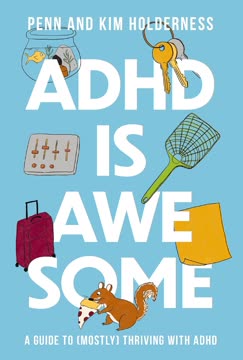
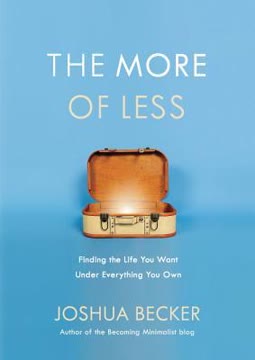
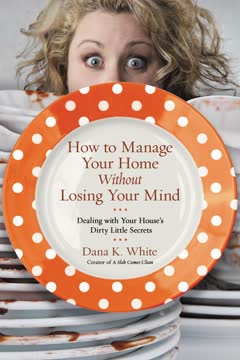
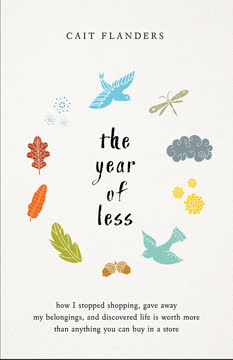
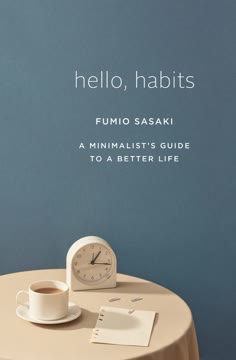
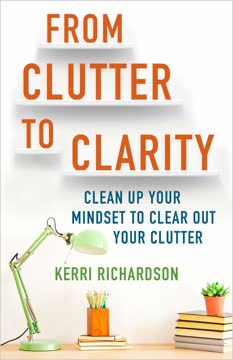
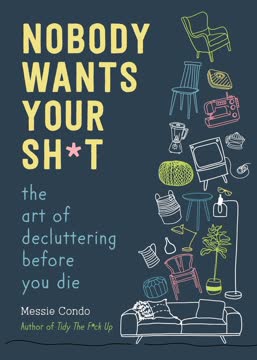
Download PDF
Download EPUB
.epub digital book format is ideal for reading ebooks on phones, tablets, and e-readers.
